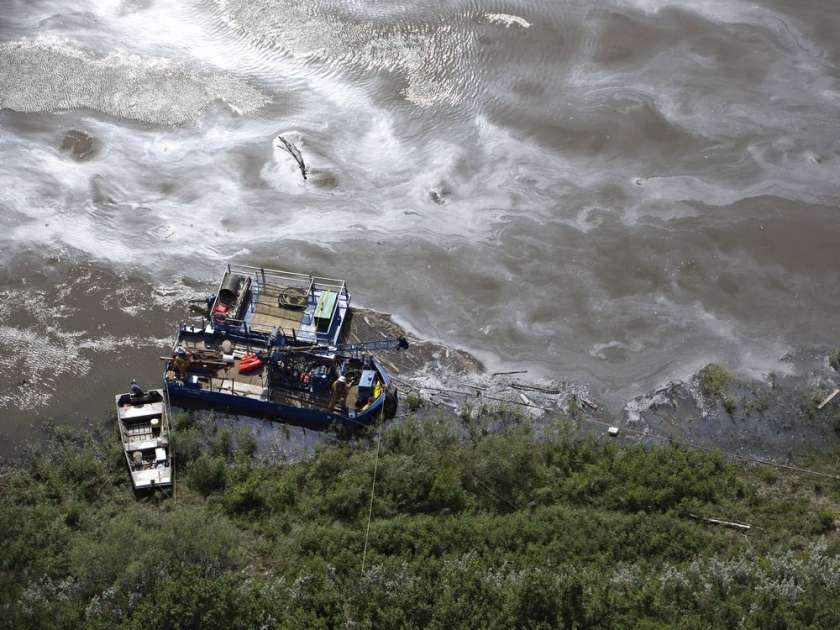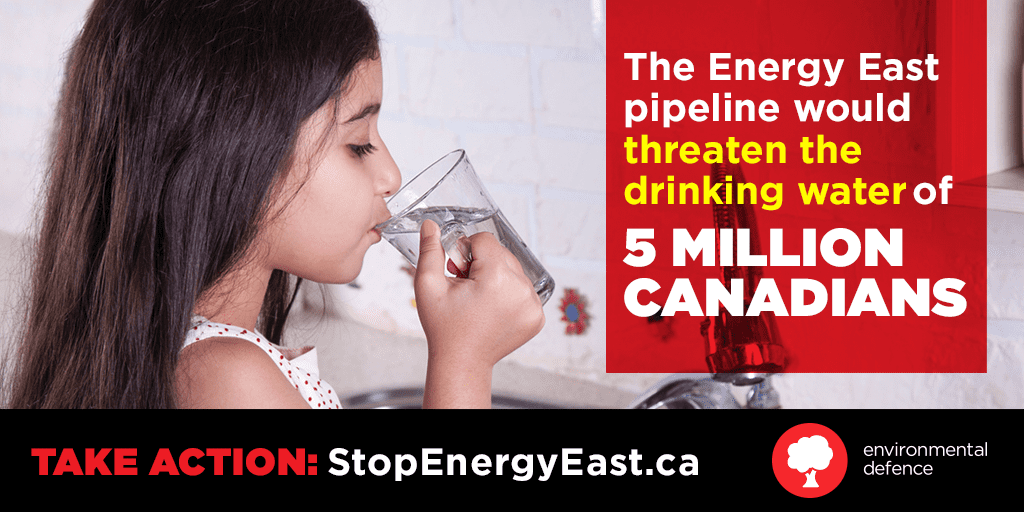The oil industry keeps telling us that its pipelines are safe. But on July 20, a Husky oil pipeline in Saskatchewan ruptured, leaking up to 250,000 litres of heavy crude oil and diluent into the North Saskatchewan River. The spill killed birds, fish and other animals, forced a First Nation to declare a state of emergency, and polluted the drinking water supplies of 70,000 people – for months to come.
The Husky spill is unfolding just as the National Energy Board (NEB) begins its review of the proposed Energy East pipeline. The spilled crude has already contaminated hundreds of kilometres of river and shoreline, serving as a stark reminder of the risks of pipelines to our communities, environment and water. It’s one more reason to tell Ottawa to reject Energy East.

It will probably take months of investigations to get the full picture, but here’s what we know. The Saskatchewan spill was first detected by Husky Energy’s pipeline monitoring system on the evening of July 20th, but the company did not notify the Saskatchewan government until the next morning, 14 hours later.
Equally outrageous, Husky didn’t dispatch a crew and didn’t shut down the pipeline until the morning of July 21st. The delayed response meant that the spill, equivalent to two full rail tanker cars, travelled 500 km down the North Saskatchewan River, forcing three downstream cities to shut down their water supply intakes and the Muskoday First Nation to declare a state of emergency.
Over three weeks after the spill, water samples still show levels of hydrocarbons too high for healthy aquatic life and drinking water. The Saskatchewan government has admitted that it is unlikely that cleanup crews will be able to recover all of the oil as portions have already sunk to the riverbed (similar to the behaviour of diluted bitumen in water).
Husky Energy has been roundly criticized for its poor spill response and for its initial misrepresentation of the chain of events. The company’s apology for the spill is cold comfort to the 70,000 residents who no longer have a clean supply of drinking water from the North Saskatchewan River.
As much as oil companies talk about pipeline safety and emergency response, the reality is that the oil industry has an atrocious record on spills. The Transportation Safety Board reports that there were 69 significant pipeline spills in Canada in 2015 alone. The Husky spill was the third oil spill near the North Saskatchewan River in just eight months.
TransCanada, the pipeline company behind Energy East, has a similarly bad record on the environment. Its Keystone I pipeline leaked oil a disastrous 12 times in its first year of operation. A 2014 NEB audit found TransCanada failed to meet standards in hazard identification, risk assessment and control, operational control, and inspection, measurement and monitoring and management review.
As the review of the proposed Energy East pipeline kicks off in New Brunswick, the Husky spill underscores that many Canadians are rightfully concerned about the risks the pipeline would bring. It shows that even a limited spill from a relatively small gathering pipeline poses unacceptable risks to our drinking water and environment.
For comparison, the Husky pipeline was just 16 inches in diameter, while the proposed Energy East pipeline would be a whopping 42 inches across. If built, Energy East would transport 1.1 million barrels of tar sands oil per day 4,600 km across Canada, crossing nearly 3,000 lakes, rivers and streams before loading the oil onto tankers in the Bay of Fundy. The export pipeline would put the drinking water of over 5 million Canadians at risk.
The question is not if pipelines spill, but when. Are Canadians really supposed to believe TransCanada when it says that Energy East, the largest tar sands pipeline ever proposed in this country, can deliver oil safely and responsibly?
The Husky oil spill in Saskatchewan is a sad reminder of the risks of Energy East. We don’t need another massive oil pipeline that would put our communities, environment and water at risk. It’s time to reject Energy East.









